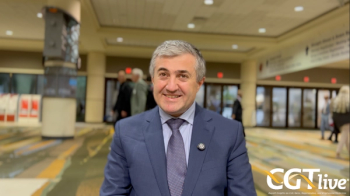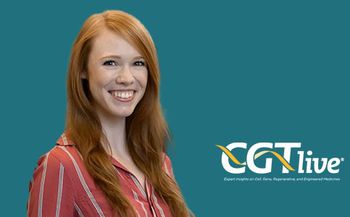
High-Dose Therapy With Stem-Cell Transplantation in the Malignant Lymphomas
Approximately 35,000 stem (progenitor)-cell transplants are performed annually worldwide, with an estimated yearly growth rate of between 10% and 20%.[1] Non-Hodgkin’s lymphoma remains the second most common indication for stem-cell transplantation, and Hodgkin’s disease ranks approximately seventh overall.[1]
Approximately 35,000 stem (progenitor)-cell transplants are performed annually worldwide, with an estimated yearly growth rate of between 10% and 20%.[1] Non-Hodgkins lymphoma remains the second most common indication for stem-cell transplantation, and Hodgkins disease ranks approximately seventh overall.[1]
Despite these statistics, there remains significant controversy regarding such issues as the timing of transplantation, source of stem cells, and the need for post-transplant therapy. Winter carefully and thoroughly reviews the role of stem-cell transplantation in the Hodgkins and non-Hodgkins lymphomas.
Hodgkins Disease
With respect to patients with Hodgkins disease, we agree completely with Winter that high-dose therapy plus autologous hematopoietic progenitor-cell transplantation is indicated for the majority of patients who relapse. We would go one step further and assert that most, if not all, relapsed patients should be considered for transplantation, regardless of the duration of first remission. Like Winter, we would also advocate high-dose therapy for patients with primary refractory disease.
Hopefully, the issue of how to integrate high-dose therapy into the initial treatment of untreated, high-risk patients will be resolved by the current intergroup trial (outlined in Winters Figure 1). A recent German trial, however, did not demonstrate any advantage to dose escalation of the BEACOPP (bleomycin, etoposide, Adriamycin, cyclophosphamide, Oncovin, procarbazine, and prednisone) regimen over standard doses of BEACOPP.[2]
The issue of the development of secondary myelodysplasia in patients following high-dose therapy remains problematic and merits careful consideration before proceeding with this therapy. However, we agree with Winter and others[3] that the treatment given prior to high-dose therapy likely precipitates the development of myelodysplastic syndrome following high-dose therapy. This risk should decline as first-line therapy becomes safer.
Despite the apparent benefits of high-dose therapy in patients with relapsed Hodgkins disease, the majority of these patients will suffer additional recurrences. Therefore, we must continue to improve first-line therapies, investigate additional treatments (eg, radiation, immune therapies) that can be delivered after high-dose therapy, and explore the use of allogeneic grafts.
Non-Hodgkins Lymphomas
Providing a general statement on the utility of high-dose therapy in non-Hodgkins lymphomas is more problematic because of the inherent complexity and diversity of the diseases that fall under this heading. The evidence clearly supports a role for high-dose therapy in patients with relapsed, chemosensitive, aggressive non-Hodgkins lymphomas, and argue against its use in patients with chemorefractory disease. Data on the use of high-dose therapy in patients with partial responses and in untreated patients with high-risk features remain unclear and controversial, however.
We agree with Winters comprehensive review of the role of high-dose therapy in the various clinical settings and non-Hodgkins lymphoma histologies. Our comments will focus on several issues: (1) the role of high-dose therapy as part of initial therapy; (2) the source of the stem cells utilized; and (3) the use of adjuvant therapy concurrently with or following high-dose therapy to maximize its benefit.
High-Dose Therapy as Part of Initial TherapyThe International Prognostic Index (IPI) demonstrates that, in patients with more than one of the age-adjusted risk factors (elevated lactic dehydrogenase level, stage, and performance status), long-term disease-free survival is affected by both a low complete remission rate and a high recurrence rate in the complete remitters. We believe that both of these issues need to be addressed in the design of novel chemotherapeutic approaches. The positive results reported by Gianni and colleagues using high-dose sequential therapy support this hypothesis.[4] This program integrated high-dose therapy with intensive pretransplant therapy.
Our confirmatory phase II, pilot trial of high-dose sequential therapy in the United States duplicated Giannis superior results with a similar program.[5] However, a phase III study comparing this approach to standard CHOP (cyclophosphamide, doxorubicin HCl, Oncovin, and prednisone) therapy could not be completed because of poor patient accrual. We feel that it is essential that the oncology community address this issue and support ongoing clinical trials investigating the role of high-dose therapy as part of initial therapy (see Winters Figure 2).
Source of Stem CellsThe selection of stem cellsallogeneic vs autologous, peripheral blood vs bone marrow, and purged vs unpurgedhinges on two important, incompletely resolved issues: (1) the frequency and importance of clonogenic tumor cells in the graft; and (2) the role that the graft-vs-lymphoma effect may play in the treatment of these diseases. In general, we agree with Winters review of these important questions and look forward to clinical trials designed to address them. Of particular interest will be the use of nonablative allogeneic transplantation and/or posttransplant immunomodulatory treatments to uncouple the deleterious effects of graft-vs-host disease from the beneficial aspects of the graft-vs-lymphoma response.
Role of Adjuvant TherapyFinally, the role of adjuvant therapy following transplantation has not been clarified, due to the lack of randomized studies comparing the different therapies. Data from our group and others suggest the possible value of radiation therapy to sites of prior bulk disease following high-dose therapy.[Boyle T, Morr J, Water D, et al, unpublished data, 1999] However, phase III trials will be needed to document the efficacy of this approach over standard therapy.
Similarly, numerous agents (eg, antibodies, interferons, and interleukins) have shown promising results when used posttransplantation. However, without the rigors of randomized, controlled studies, these agents cannot be considered as part of standard therapy at present.
Summary
In summary, we agree with Winter that these are exciting times in the management of patients with lymphomas. Data indicating that high-dose therapy improves the chances of curing patients with Hodgkins disease and non-Hodgkins lymphoma justify the position of the latter disease as the second most common indication for autologous high-dose therapy. Despite the advances that have been made, however, a great deal more needs to be accomplished via the integration of basic science into carefully controlled clinical trials so that the majority of patients undergoing high-dose therapy are ultimately cured of their disease.
References:
1. IBMTR: International Bone Marrow Transplant Registry Website. Available at www.ibmtr.org. Accessed September 17, 1999.
2. Diehl V, Franklin J, Hasenclever D, et al: BEACOPP, a new, dose-escalated and accelerated regimen, is at least as effective as COPP/ABVD in patients with advanced-stage Hodgkins lymphoma: Interim report from a trial of the German Hodgkins Lymphoma Study Group. J Clin Oncol 16:3810-3821, 1998.
3. Abruzzese E, Radford JE, Miller JS, et al: Detection of abnormal pretransplant clones in progenitor cells of patients who developed myelodysplasia after autologous transplantation. Blood 94:1814-1819, 1999.
4. Gianni AM, Bregni M, Siena S, et al: High-dose chemotherapy and autologous bone marrow transplantation compared with MACOP-B in aggressive B-cell lymphoma. N Engl J Med 336:1290-1297, 1997.
5. Schenkein DP, Roitman D, Miller KB, et al: A phase II, multicenter trial of high-dose, sequential chemotherapy and peripheral blood stem-cell transplantation as initial therapy for patients with high-risk non-Hodgkins lymphoma. Biol Blood Marrow Transplant 3:210-216, 1997.
Newsletter
Stay at the forefront of cutting-edge science with CGT—your direct line to expert insights, breakthrough data, and real-time coverage of the latest advancements in cell and gene therapy.

















































